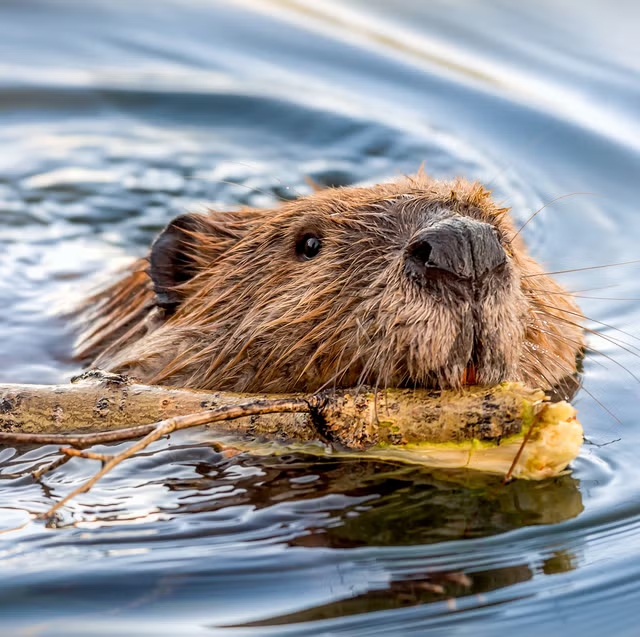By the mid-19th century, the Eurasian beaver had been exterminated from the Carpathian Basin, and for a time it even seemed that the species would become completely extinct: according to estimates, only about 1,200 individuals survived in Europe, scattered across just eight small populations. They were hunted mainly for their fur, but their meat was also consumed. Interestingly, the Catholic Church classified the beaver as a fish, because of its fin-like tail, which meant it was permitted to be eaten during Lent. Its glandular secretion, castoreum, was used as a medicine (believed effective against everything from fever to headaches), and in some regions even for flavoring liqueurs. The beaver is a major transformer of its environment: it builds dams, floods valleys, and fells trees. In the 18th–19th centuries, when river regulation and wetland drainage were underway, beavers were considered pests that “hindered progress” – which was another reason for their eradication.
The European beaver population began to recover in the second half of the 20th century thanks to protection and reintroduction programs. In Hungary, the species was declared protected in 1988; individuals returned spontaneously from Austria and Croatia, and others through the WWF Hungary reintroduction program. According to some estimates, today there are already 10–11 beavers living in Hungary. A sharp-eyed hiker can even spot their traces along major waterways on the outskirts of Budapest. The beaver’s landscape-shaping activity mainly causes conflicts with farmers, largely due to a lack of knowledge. Beaver dams rarely increase flood risk, and by retaining water they generally reduce it. Decaying wood and marshy ponds create new habitats for other species, so beavers indirectly increase biodiversity. It is also true, however, that they can cause damage in parks and protected floodplain forests. The native trees they fell are often replaced by invasive alien species introduced by humans. Their burrowing can damage dikes and riverside roads. The solution lies in spreading knowledge and best practices.
The Beaver Map is a Hungarian community-based monitoring project whose aim is to map the distribution, habitats, and impacts of the Eurasian beaver, and to improve the management of conflicts between people and nature. The site also features a blog with detailed field reports, photographic documentation, and numerous educational articles showing beaver signs, habitat changes, and how beavers affect wetlands, vegetation, and water flow. What it does not include is a detailed public map of others’ findings – the site is not intended to guide poachers. It is primarily recommended for those who enjoy being in nature and would like to contribute to a community science project. Hikers, anglers, nature photographers, or even student groups can easily take part in data collection: if they find beaver signs – such as gnawed trees, lodges, or dams – they can upload them to the system. Thus, the joy of hiking is enriched by the satisfaction of directly helping to improve knowledge of the species’ behavior, impact, and habitats.

